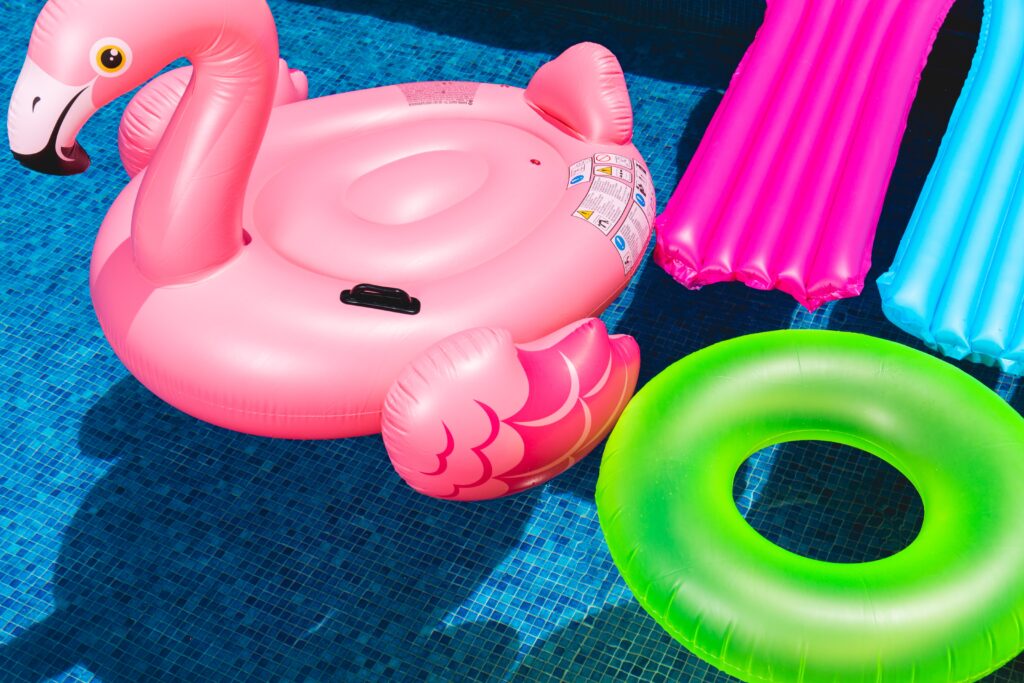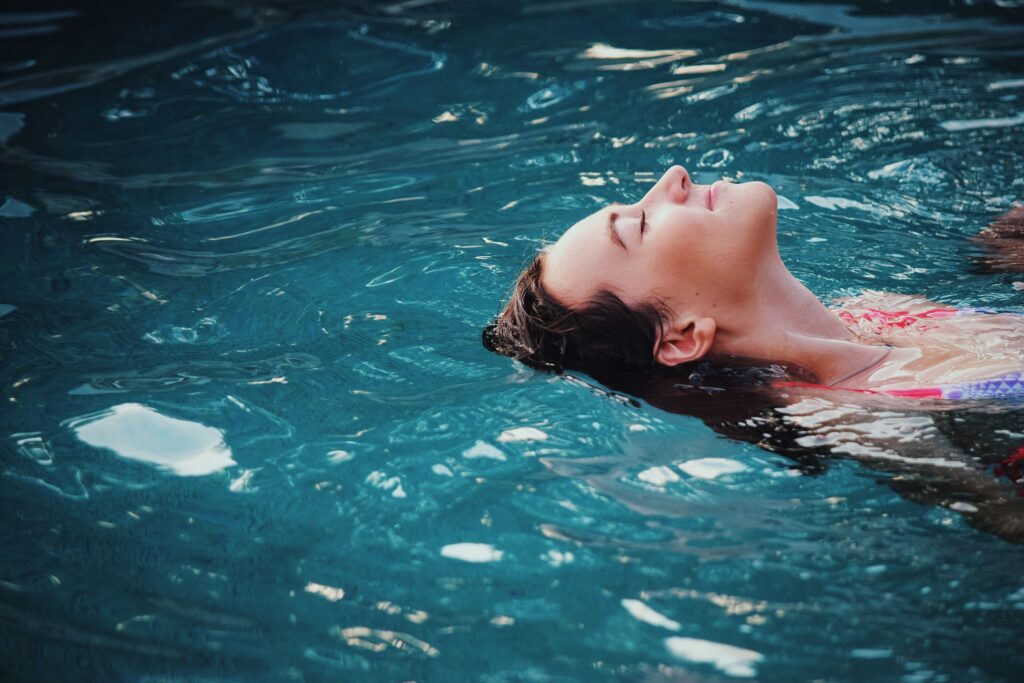Setting up an above ground pool is an exciting endeavor, but have you ever wondered just how long it takes to get everything ready for a refreshing swim? Well, fear not! In this article, we will explore the average amount of time it takes to set up an above ground pool, giving you a better understanding of what to expect and helping you plan accordingly. So, grab your swim trunks and let’s dive into the world of above ground pool setup!
This image is property of images.unsplash.com.
Choosing the Right Location
Considering the Space Requirements
When setting up an above ground pool, the first step is to choose the right location. You want to make sure you have enough space to accommodate the size of the pool, as well as provide easy access for maintenance and enjoyment. Consider the dimensions of the pool and ensure that there is ample space around the perimeter for any additional structures, such as a deck or platform. It’s also important to take into account any local regulations or codes regarding pool placement in your area.
Checking for Level Ground
Another crucial factor in selecting the location for your above ground pool is ensuring that the ground is level. A perfectly level surface is important for the stability and longevity of the pool. Uneven ground can put unnecessary strain on the pool’s frame and liner, potentially leading to structural issues over time. Use a level tool to check the ground, and if necessary, make adjustments by leveling the area or using compacted sand or gravel to create a level surface.
Assessing Sun Exposure
Sun exposure is an essential consideration when choosing the location for your pool. Most people prefer to have their pool in an area that receives ample sunlight throughout the day for a more enjoyable swimming experience and to maximize the pool’s heating potential. Additionally, sunlight can help prevent the growth of algae and other unwanted organisms. Take note of any nearby trees or structures that may cast shadows on the pool during certain times of the day, and plan accordingly to maximize sun exposure.
Accessing Proximity to Utilities
Proximity to utilities is another crucial aspect to consider when selecting the location of your above ground pool. You’ll want to ensure that your pool is close enough to water and electricity sources to make it easy to fill and maintain. Having a water source nearby will make it convenient for filling the pool and providing a source for regular water top-ups. Additionally, having electricity readily available is essential for running the pool’s filter system and any accessories you may have, such as pool lights or a heat pump.
Pool Assembly
Unboxing and Organizing the Components
Once you have chosen the perfect location for your above ground pool, it’s time to begin the pool assembly process. Start by unboxing all the components and organizing them accordingly. Read through the instruction manual provided by the manufacturer to familiarize yourself with the different parts and their functions. Taking the time to organize the components will make the assembly process smoother and more efficient.
Preparing the Site
Before you begin assembly, it’s crucial to properly prepare the site where the pool will be installed. This includes clearing away any debris, rocks, or vegetation that may interfere with the pool’s stability or cause damage to the liner. You may also consider using a ground cloth to provide an added layer of protection between the pool and the ground. This will help prevent any sharp objects from puncturing the pool’s liner.
Laying the Ground Cloth
After preparing the site, it’s time to lay down the ground cloth. This serves as a protective barrier between the pool and the ground, preventing any potential damage from rocks, roots, or other debris. Make sure the ground cloth is completely flat and covers the entire area where the pool will be placed. Secure it in place using stakes or weights to ensure it stays in position during the assembly process.
Assembling the Frame
The next step in pool assembly is putting together the frame. Refer to the instruction manual for specific guidance on how to assemble the frame components. Typically, the frame consists of metal or plastic parts that interlock or connect to form the pool’s structure. Follow the manufacturer’s instructions carefully, ensuring that all connections are secure and tight. This will provide the necessary stability for the pool and ensure its longevity.
Installing the Pool Liner
Once the frame is assembled, it’s time to install the pool liner. The liner is the waterproof barrier that holds the water in the pool and provides a smooth and comfortable surface for swimming. Carefully position the liner inside the pool, making sure it is centered and aligned properly. Smooth out any wrinkles or folds, taking care not to apply too much tension. Attach the liner to the frame or wall of the pool as per the manufacturer’s instructions.
Filling the Pool with Water
With the frame assembled and the liner in place, it’s time to fill the pool with water. Connect a garden hose to a water source and carefully feed it into the pool. Start filling the pool slowly to allow the liner to settle into place without causing any unnecessary stress on the frame or liner. Keep a close eye on the water level and make adjustments as needed. It may take several hours or even days to fill the pool completely, depending on its size and the water pressure.
Setting Up Filter System and Accessories
Installing and Connecting the Filter Pump
Once the pool is filled with water, it’s time to set up the filter system. The filter pump is an essential component of any above ground pool as it helps circulate and clean the water. Follow the manufacturer’s instructions to install the filter pump, ensuring it is securely connected to the pool’s plumbing system. This may involve attaching hoses and clamps to the appropriate valves or connectors.
Connecting the Hoses
In addition to the filter pump, you will also need to connect hoses for water intake and return. These hoses allow water to flow from the pool to the filter and then back into the pool. Ensure that the hoses are properly connected and tightened to prevent any leaks or loss of suction. Some above ground pools may come with a skimmer, which will also require proper hose connections for optimal functionality.
Setting Up the Skimmer and Return Jet
If your above ground pool includes a skimmer, it’s important to set it up properly. The skimmer helps remove any debris or leaves floating on the surface of the water, keeping the pool clean and clear. Follow the manufacturer’s instructions to install the skimmer, ensuring that it is securely connected to the pool’s plumbing system. Likewise, install the return jet, which helps distribute filtered water back into the pool.
Installing the Ladder
To provide easy access to the pool, install the ladder according to the manufacturer’s instructions. Most above ground pools come with a ladder that attaches to the pool’s frame. Make sure the ladder is securely fastened and stable, as safety is paramount when using the pool. Consider adding non-slip ladder treads for additional safety and grip.
Adding the Pool Chemicals
Maintaining proper water chemistry is crucial to keeping your pool clean and safe for swimming. Before adding any pool chemicals, make sure to read the instructions and follow the manufacturer’s recommendations. Typically, you will need to add chlorine or other sanitizers to kill bacteria and prevent the growth of algae. Test kits are available to measure water chemistry parameters such as pH, alkalinity, and chlorine levels. Regularly test the water and make necessary adjustments to maintain optimal conditions.
Testing the Water Quality
Once the pool chemicals have been added, it’s important to test the water quality regularly. This can be done using test strips or test kits that measure various water parameters. Monitoring the water chemistry will help you ensure that the pool is safe for swimming and prevent any potential issues such as eye or skin irritation. Adjust the chemical levels as needed to maintain a balanced and healthy swimming environment.
Maintaining the Pool
Regular Cleaning and Skimming
To keep your above ground pool in optimal condition, regular cleaning and skimming are essential. Use a pool skimmer or net to remove any debris, insects, or leaves that may accumulate on the surface of the water. This will not only keep the pool looking clean and inviting but also help prevent clogging of the filtration system. Additionally, regularly brush the pool walls and floor to remove any algae or dirt buildup.
Monitoring Water Chemistry
Ongoing monitoring of water chemistry is crucial to maintaining a safe and clean swimming environment. Regularly test the water for pH, alkalinity, and sanitizer levels and make any necessary adjustments. Maintaining proper water chemistry will help prevent issues such as cloudy water, bacteria growth, and eye or skin irritation.
Maintaining Proper Water Levels
It’s important to monitor and maintain the proper water levels in your above ground pool. Too little water can strain the pool’s frame and liner, potentially leading to damage or instability. On the other hand, overfilling the pool can cause water to overflow and potentially damage the surrounding area. Regularly check the water level and make adjustments as necessary to ensure it stays within the recommended range.
Backwashing the Filter
To maintain the efficiency of your pool’s filter system, regular backwashing is necessary. Backwashing involves reversing the flow of water through the filter to remove trapped debris and buildup. Follow the manufacturer’s instructions on how to backwash your specific filter system. This process will help maintain a clean and effective filtration system, ensuring that your pool water remains clear and free from contaminants.
Checking for Leaks
Regularly inspect your above ground pool for any signs of leaks. This can be done by visually checking for water loss or using dye tests to identify potential leaks. Pay close attention to areas around fittings, connections, and seams, as those are common areas where leaks may occur. Fix any leaks promptly to prevent further damage or loss of water.
Winterizing the Pool
If you live in an area with cold winters or won’t be using your above ground pool for an extended period, it’s important to properly winterize it. Winterizing involves draining the pool, removing all water from the plumbing system, and protecting the pool from potential damage caused by freezing temperatures and ice. Follow the manufacturer’s instructions or consult a professional to ensure the correct winterization process.
This image is property of images.unsplash.com.
Factors Affecting Setup Time
The Size and Shape of the Pool
The size and shape of the above ground pool can significantly impact the time it takes to set up. Smaller pools with simpler designs may be quicker to assemble compared to larger, more intricate pools. Circular pools tend to be easier to install, while pools with unique shapes or additional features may require more time and effort.
Experience and Familiarity
The level of experience and familiarity with above ground pool assembly can affect the setup time. If you are a first-time pool owner or have little experience with pool installation, it may take longer to understand the instructions and complete the assembly process. As you gain more experience and become familiar with the steps involved, the setup time can be significantly reduced.
Available Help
Having assistance from others can greatly impact the setup time of an above ground pool. Having one or more additional people to help with lifting and assembling components can expedite the process. Dividing the tasks and working as a team can make the installation more efficient and less time-consuming.
Preparation and Organization
Preparation and organization play a crucial role in reducing setup time. Having all the necessary tools, equipment, and supplies ready before starting the assembly process can save valuable time. Additionally, organizing the components and following a systematic approach, as outlined in the instruction manual, can streamline the setup process.
Tools and Equipment
Using the proper tools and equipment can significantly impact the setup time of an above ground pool. Make sure you have all the necessary tools readily available, such as screwdrivers, wrenches, and pliers, to efficiently assemble the pool components. Investing in quality tools can also make the assembly process smoother and reduce the risk of any installation issues.
Obstacles in the Installation Area
The presence of obstacles in the installation area can add time to the setup process. Uneven or sloping ground, tree roots, rocks, or other obstructions may require additional effort and adjustment to ensure a level and stable foundation for the pool. It’s important to address any obstacles before starting the assembly process to minimize any potential delays.
Additional Steps for Complex Pools
Building a Deck or Platform
For more complex above ground pools, you may consider building a deck or platform around the pool. This can provide a more finished and functional space for lounging, sunbathing, and entertaining. Building a deck or platform may add extra time to the setup process, as it requires additional planning, construction, and finishing.
Installing Pool Lights
Adding pool lights can enhance the ambiance and functionality of your above ground pool, especially for nighttime swimming or entertaining. Installing pool lights will require electrical work and proper waterproofing to ensure safety and functionality. Follow the manufacturer’s instructions and consult an electrician if needed to properly install the pool lights.
Adding a Heat Pump or Heater
If you live in a region with colder temperatures or want to extend your swimming season, adding a heat pump or heater to your above ground pool can be a worthwhile investment. Installing a heat pump or heater will involve plumbing and electrical work, as well as following the manufacturer’s instructions accurately. Consider hiring a professional for this installation to ensure it is done correctly and safely.
Installing a Solar Cover
A solar cover is an excellent way to harness the sun’s heat and reduce the amount of evaporation in your above ground pool. Installing a solar cover is a relatively simple process and typically involves unrolling the cover across the water’s surface. A reel system may be installed to allow for easy removal and storage of the solar cover.
Setting Up a Pool Fence
To ensure safety and comply with local regulations, setting up a pool fence around your above ground pool may be necessary. Pool fences can provide a barrier to prevent unsupervised access to the pool and help protect children and pets. Installing a pool fence will add extra time to the setup process, as it involves measuring, securing posts, and attaching the fence panels.
Adding Water Features
Adding water features, such as fountains, sprayers, or waterfalls, can create a beautiful and enjoyable atmosphere in your above ground pool. Water features can be installed using kits specifically designed for above ground pools. Follow the manufacturer’s instructions and consider any additional plumbing or electrical requirements for proper installation.
This image is property of images.unsplash.com.
Tips for Faster Pool Setup
Read and Follow the Instructions
One of the most important tips for a faster pool setup is to thoroughly read and follow the instructions provided by the manufacturer. Instructions are designed to guide you through the setup process and help you avoid any mistakes or issues. Taking the time to familiarize yourself with the instructions will save time in the long run.
Prepare the Site in Advance
Preparation is key to a faster pool setup. Clear the installation area of any debris, level the ground if necessary, and have the necessary tools and equipment readily available before starting the assembly process. This will prevent unnecessary delays and interruptions.
Enlist Help from Others
Having additional help can significantly speed up the pool setup process. Enlist family members, friends, or neighbors to assist with lifting and assembling pool components. With multiple people working together, tasks can be divided, and the setup time can be greatly reduced.
Use Proper Tools and Equipment
Using the proper tools and equipment will make the pool setup process faster and more efficient. Ensure that you have all the necessary tools, such as screwdrivers, wrenches, and pliers, to assemble the pool components. Using the right tools will also minimize the risk of any installation issues or damaged components.
Take Breaks to Avoid Fatigue
While it’s important to complete the pool setup efficiently, it’s also crucial to take breaks and rest when needed. Pool assembly can be physically demanding, so listen to your body and pace yourself. Taking breaks will help prevent fatigue and ensure that you stay focused and alert throughout the setup process.
Invest in Pool Setup Accessories
There are various accessories available that can make the pool setup process faster and more convenient. For example, pool wall foam can be installed to protect the pool liner and provide added insulation. Pool cove can be used to create a smooth transition between the pool’s wall and the ground. These accessories, when used correctly, can save time and enhance the overall setup experience.
Common Challenges and Troubleshooting
Uneven or Sloping Ground
One common challenge during above ground pool setup is dealing with uneven or sloping ground. If the ground is not level, it can affect the stability and durability of the pool. In such cases, you may need to make adjustments by leveling the ground or using compacted sand or gravel to create a level surface. Take your time to ensure that the pool is on solid and level ground before proceeding with the setup.
Obstacles like Tree Roots or Rocks
Obstacles such as tree roots or rocks can pose challenges during pool setup. These can prevent the pool from sitting flat on the ground or cause damage to the liner. Clear any large rocks or roots from the installation area and consider using a ground cloth or leveling agent to provide a smooth and stable surface for the pool.
Leaks in the Pool or Connections
Another common challenge is dealing with leaks in the pool or connections. It’s important to regularly check for leaks and address them promptly to prevent further damage. Inspect the pool for any signs of water loss, such as wet spots or a drop in water level. Check all fittings, connections, and seams for any signs of leaks and apply appropriate patches or sealants as needed.
Pump or Filter Malfunctions
Issues with the pump or filter system can arise during pool setup. It’s important to follow the manufacturer’s instructions for proper installation and maintenance of the pump and filter. If you encounter any malfunctions or performance issues, troubleshoot the problem by referring to the instruction manual or contacting the manufacturer for assistance.
Water Chemical Imbalances
Maintaining proper water chemistry can be challenging for pool owners. Imbalances in pH, alkalinity, or sanitizer levels can result in cloudy water, algae growth, or discomfort for swimmers. Regularly test the water and adjust the chemical levels as needed. If you are unsure about how to maintain proper water chemistry, consult a pool professional for guidance.
Difficulties with Liner Installation
Installing the pool liner can be a challenging task, especially for larger or more complex pools. Wrinkles, folds, or improper alignment can impact the appearance and longevity of the liner. Take your time and follow the manufacturer’s instructions carefully. Smooth out any wrinkles or folds, and make sure the liner is centered and aligned properly before proceeding with the setup process.
Professional Pool Installation
Benefits of Professional Installation
While many above ground pool owners choose to install their pools themselves, professional installation offers several benefits. Professional installers have the experience and expertise to ensure a safe and efficient setup. They are familiar with the specific requirements and challenges that may arise during the installation process, making it more likely that your pool will be installed correctly and according to local regulations.
Cost Considerations
Cost is an important factor to consider when deciding between DIY setup and professional installation. DIY setup typically requires purchasing the pool and necessary supplies, while professional installation includes the cost of labor. Compare the costs involved in both options and consider your budget and available resources.
Choosing a Reputable Pool Installer
If you decide to opt for professional pool installation, it’s important to choose a reputable and reliable pool installer. Research different installers in your area, read reviews, and ask for recommendations from friends or family. Ensure the installer has the necessary licenses and insurance, and discuss the specific details and requirements of your project before making a decision.
Understanding Warranty and Support
When working with a professional pool installer, it’s important to understand the warranty and support options available. Inquire about the manufacturer’s warranty for the pool and any additional warranties provided by the installer. Ask about the level of support offered after the installation, including maintenance services and troubleshooting assistance.
Comparing DIY Setup vs. Professional Service
Ultimately, the decision between DIY setup and professional installation will depend on your specific circumstances, budget, and comfort level. Consider the complexity of the pool, your personal experience and skill set, available time, and any additional factors such as access to helpers or familiarity with construction projects. Assess the pros and cons of each option and choose the one that best suits your needs and preferences.
Conclusion
Setting up an above ground pool can be an exciting and rewarding experience. By carefully considering the location, properly assembling the pool, setting up the filter system and accessories, and maintaining the pool, you can create a safe and enjoyable swimming environment for years to come. Whether you choose to tackle the installation process on your own or hire a professional, remember to prioritize safety, read and follow instructions carefully, and take the time to properly maintain your pool. With the right preparation, tools, and knowledge, you’ll soon be enjoying the refreshing waters of your above ground pool.









